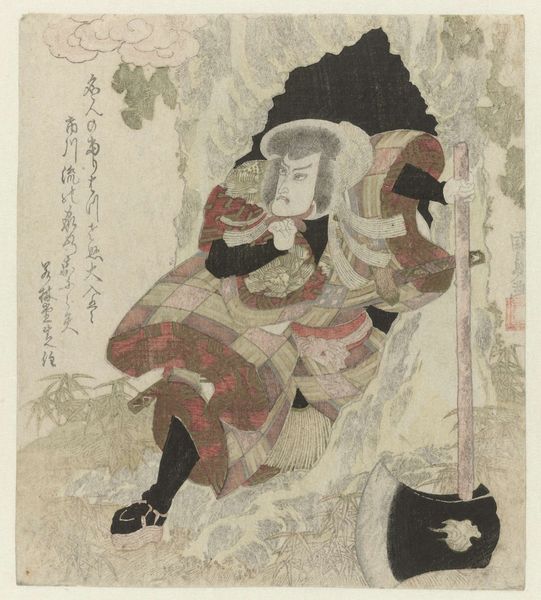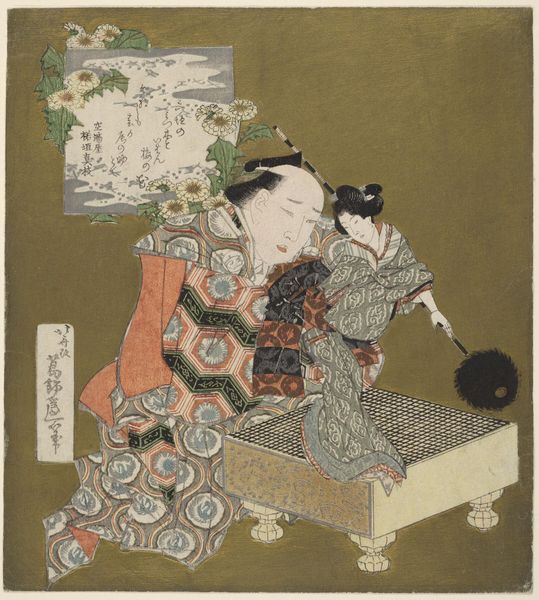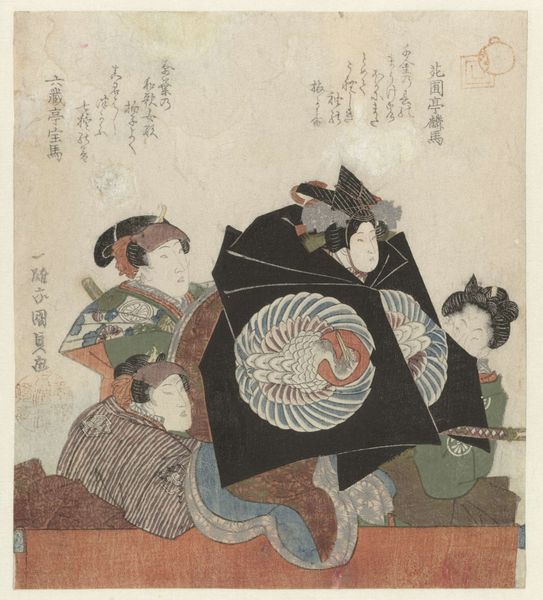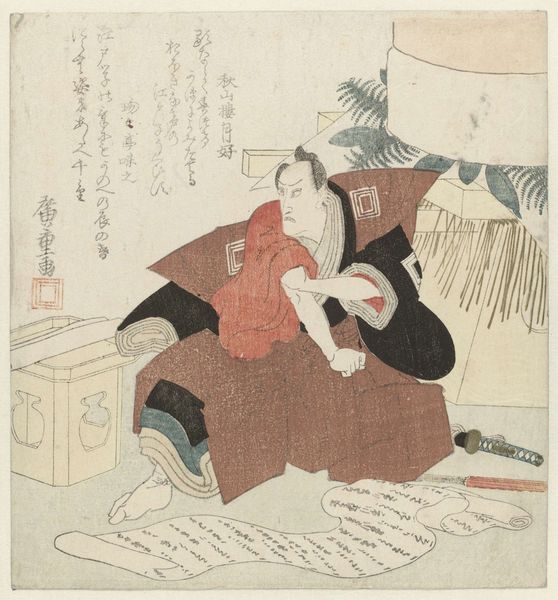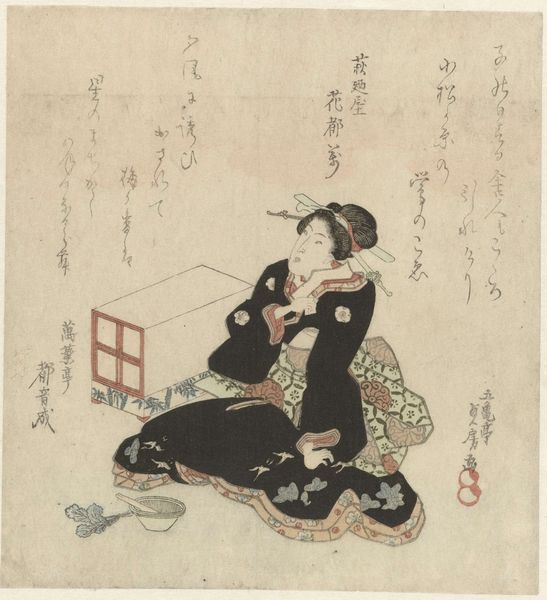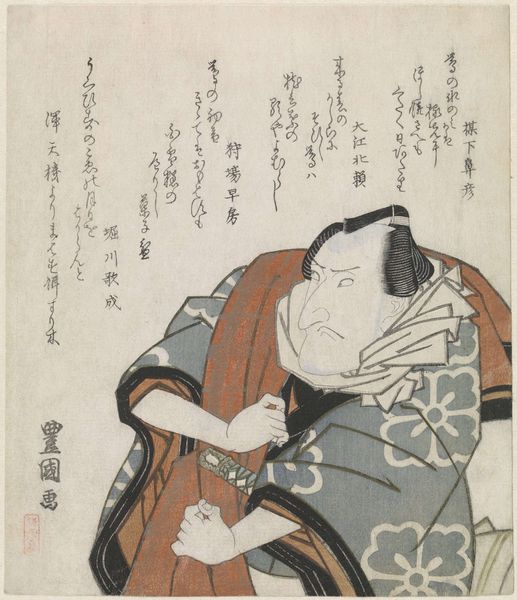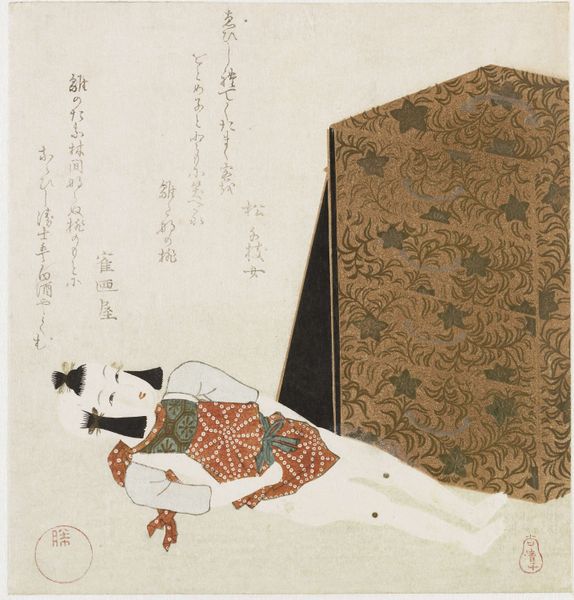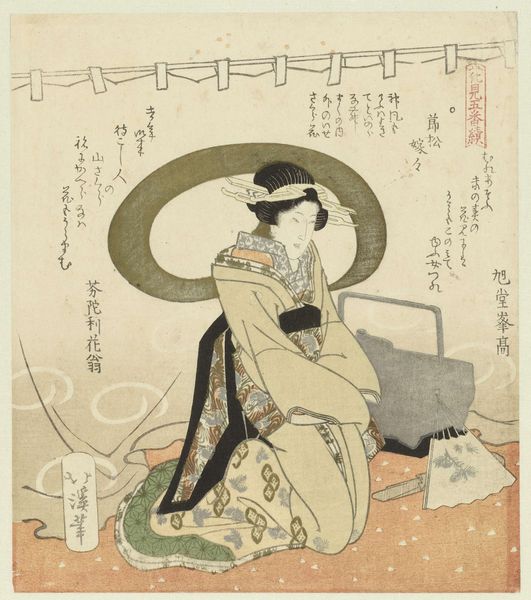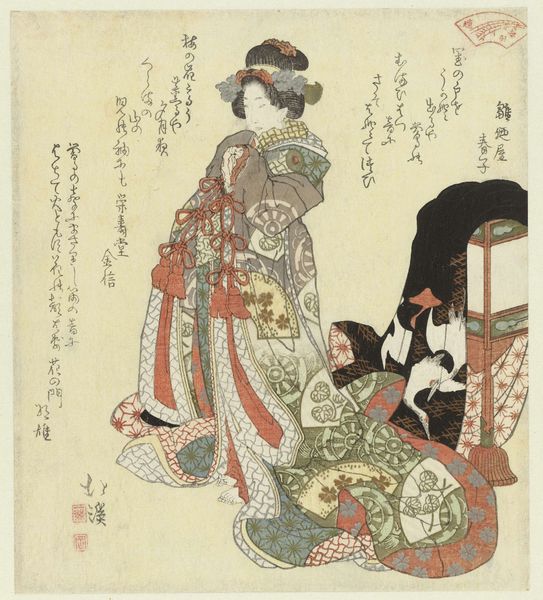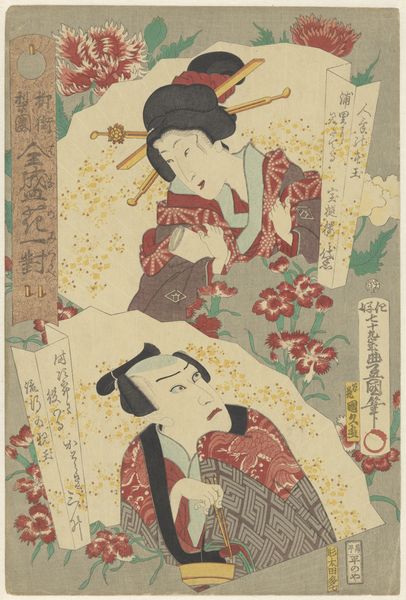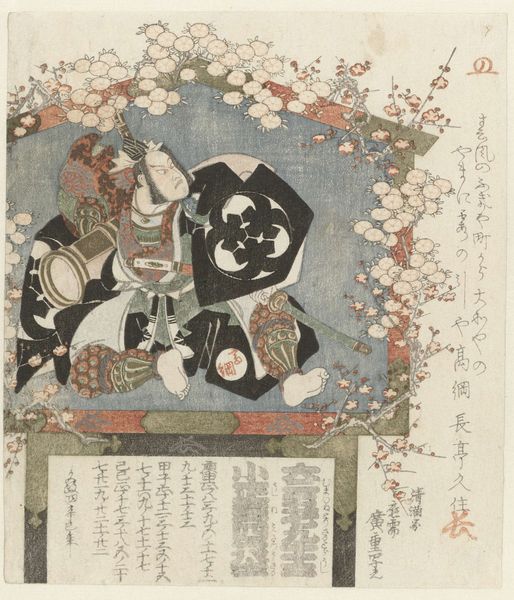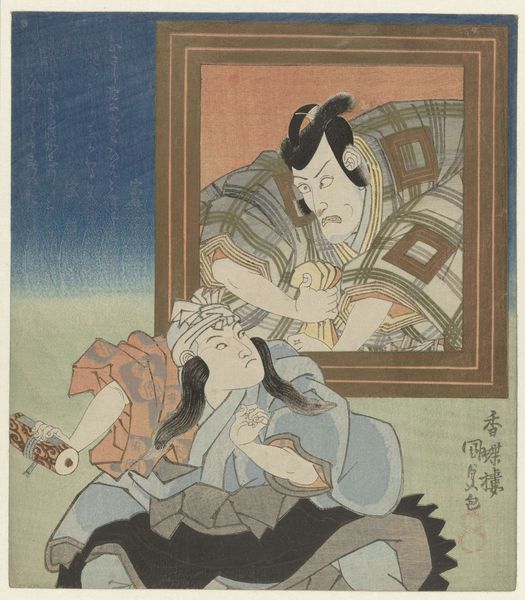
print, woodblock-print
#
water colours
#
narrative-art
# print
#
caricature
#
asian-art
#
ukiyo-e
#
linocut print
#
woodblock-print
Dimensions: height 194 mm, width 179 mm
Copyright: Rijks Museum: Open Domain
Curator: This woodblock print, created around 1823 by Totoya Hokkei, is titled "Happiness and Long Life." You can find it here at the Rijksmuseum. What are your first impressions? Editor: It’s got a sort of… whimsical feel to it. There's a rounded figure centrally placed that dominates the image; almost comically voluminous. And that intricate floral border—it gives the piece a lively and joyful aura. Curator: Indeed. The round figure is Fukurokuju, a deity associated with happiness, wealth, and longevity. Note the ukiyo-e technique at play. The lines are very clean and decisive, almost mass-produced. Consider the labor invested in carving each woodblock necessary for this print's registration and production of many such items. Editor: Hokkei made it to function within a consumer economy. How does the representation of wealth intersect with its availability to ordinary citizens? Look at the framing floral and geometric patterns and what their source would have been at the time of making the print: probably textiles that were aspirational for some consumers in Japan. Curator: Fascinating how those patterns underscore class anxieties by displaying aspirational images for sale! Fukurokuju's relaxed pose and benevolent expression, together with auspicious symbols like the pine and plum blossoms in the background, suggests an invitation into a world of good fortune—one accessible to a broader audience. Editor: But let’s dig into this Fukurokuju figure. The prominent forehead, the robes concealing much of the body... Are we meant to read this simply as jovial? Or is there perhaps a critical commentary on the social elites represented in religious allegory, especially considering the economic realities faced by the working class during this period? The print suggests that enlightenment comes via being heavyset with only a pen or a leaf to drink from? What kind of access is this promising, who gets it and what is excluded? Curator: I suppose it shows the clever play between art and material realities within print culture, simultaneously serving spiritual, aesthetic, and even socioeconomic functions for both the creator and the intended market. Editor: A complicated and compelling commodity, right? A perfect blend of spiritual longing and accessible consumption. Curator: Definitely something to think about on your way to the next gallery.
Comments
No comments
Be the first to comment and join the conversation on the ultimate creative platform.
